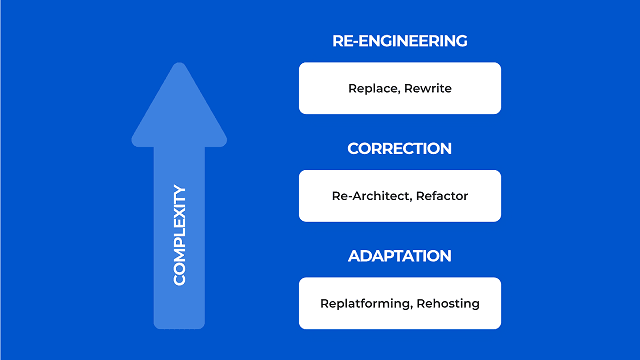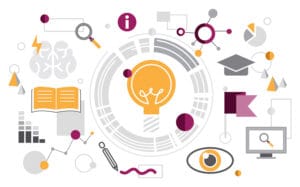Any legacy app, system, or technology discourages business development and makes it challenging to adapt to modern market demands and growing technologies. In this post, I will disclose the top six approaches to legacy software modernization and list the advantages of IT system upgrading.
Understanding the Basics: What Legacy Software Modernization Stands For
Legacy system modernization implies upgrading outdated IT systems to align existing software with modern requirements utilizing state-of-the-art technology and standards. The reasons for application modernization vary from the inability to integrate apps with other technologies and software to the need to reduce expenses on maintenance and enhance network security. It’s worth mentioning that “old” systems don’t equate to broken systems. On the contrary, the outdated IT systems might have been running sound for ages. It’s somewhat related to whether former solutions can cope with load increase, be scalable, and align with prospective business objectives.
Why Do You Need to Modernize Your Software?
Enterprises today expect their web/mobile applications to reflect the current business. They want them to be flexible, scalable, and secure. As a business environment changes, it’s vital to move IT at the same pace as the company moves to go through digital transformation effectively. So let’s take a slight look at why businesses have to renew ineffective processes.
High maintenance cost required. Supporting legacy software will cost you more than deploying the new solution in the long term. For example, the price of building a state ERP system from scratch is about $70M, while the support costs of this system are $7M (annually). Besides, renovated solutions reduce the chance of system failure.
Incompatibility with other technology. Let’s say you want to integrate blockchain into your business operations to enhance data security. In this case, it’s better to have an app deployed on cloud infrastructure due to integration complexity. Or you need your medical software to be complied with regulatory standards, like HIPAA, PIPEDA, etc. Thus, you need to ensure that your software is compatible with other systems and industry-specific regulations. In turn, up-to-date solutions integrate with advanced technologies by definition. Moreover, they often rely on various APIs (e.g., geolocation, in-app payments, etc.) to augment user experience.
Limited business opportunities. Your existing software may not fit your short- and long-term business objectives as your business scales. Continue investing in outdated system maintenance, you leave fewer opportunities for digital transformation and company growth. New-fashioned solutions will equip your organization to address industry-related challenges and adjust to fast-changing business and market needs.
6 Common Ways to Modernize Your Legacy Software
In planning modernization, it’s imperative to scrutinize all the system nuances upfront. The analysis must include existing IT architecture, technology, functionality, risks, complexity, and cost. The final choice of software modernization strategy will depend on what issues you want to address, as well as business/performance requirements.

Rehost
Rehosting implies the deploying of software in a new IT infrastructure (traditional or cloud one) without the app’s elements altered. It also relates to database migration, for example, to SQL server or AWS. This approach is associated with lower expenses than, for instance, app re-engineering and the slightest risks. Your app business logic is untouched and runs as before the migration started.
Replatform
This means that your software will be adjusted to another platform keeping its functionality, structure, and functions saved. However, software engineers retain the right to effect low-level changes to the code (e.g., managed database, auto-scaling, etc.).
Code refactoring
This approach signifies transformation and optimization of the server-side of the app (back end), keeping the user-side (front end) behavior and features intact. This approach is aimed to increase software performance by withdrawing tech issues and enhancing the IT ecosystem’s structure and functionality.
Re-architecting
This strategy means that tech specialists adjust the code to a new architecture to achieve the fullest existing potential existing system. For instance, you can migrate from conventional (monolithic) solution architecture to an advanced one based on microservices.
Redesigning
Well, the name speaks for itself. Rebuilding implies that the application is built from scratch while drawing similar features and business logic. Commonly, this strategy is applied when existing software can’t meet the customers’ needs anymore. Additionally, this option should be considered when managing the former solution is challenging due to expertise and resource restrictions.
Replacing
In some cases, it’s more cost-efficient to shift to another system than to refine the existing one. This is where you deal with software replacement. Replacing option conveys designing a custom software solution tailored to your new business objectives and requirements. There is no sense in using current business logic and features to make the most out of this decision. However, just like redesigning, ensure that the development cost of a new solution won’t be higher than supporting the existing one.
Bottom Line
The technology world shifts rapidly, imposing the game rules on business owners and software developers. Therefore, businesses must move quickly and regularly update their IT systems to stay on the edge of technology and be ahead of the contenders.
Author
Yuliya Melnik is a technical writer at Cleveroad. It is a web and mobile app development company in Ukraine. She is passionate about innovative technologies that make the world a better place and loves creating content that evokes vivid emotions.











